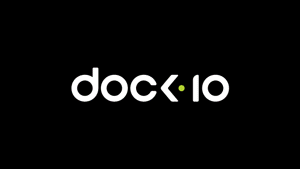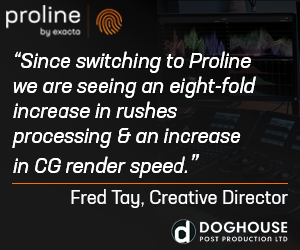As consumers tighten their belts, ad funded models are becoming a more enticing prospect for streamers. Meg Carter reports
Netflix’s announcement in April that it has hit an apparent subscriber wall sent out shockwaves, prompting many to question how attractive and profitable the streaming model can be. But suggestions of a streaming crash are premature. Rather, video streaming is growing up. And as it evolves, its shape and model are changing.
For years, subscription VOD (SVOD) services have dominated. Now, with the likes of HBO Max, Peacock and Disney-owned Hulu allowing subscribers to pay less or sometimes nothing to access select programming in return for watching ads – and even Netflix finally considering an ad-funded tier – ad-funded VOD (AVOD) and free ad-supported streaming TV (FAST) services are on the rise.
For proof look no further than this summer’s launch of ITVX, the UK’s first integrated AVOD/SVOD platform, and the arrival of Paramount Plus, a premium subscription platform launched by Paramount last year to compete with Netflix and Amazon Prime Video and run alongside its ad-supported free streaming service Pluto TV.
Meanwhile, following a deal struck with You Tube in early May, Channel 4 will sell its own advertising around 1,000 hours of full Channel 4 and E4 programming on the social platform by the end of this year.
Many have speculated on the current shifts in the VOD streaming market.
News from Netflix’s that it had not only lost 200,000 subscribers globally in Q1 2022 – its first fall in subscribers in a decade – but now expects to lose a further two million in Q2, was seen by some as signalling an about-turn in SVOD’s fortunes.

According to an Accenture survey across five regions including the US and Europe, 63% of consumers agree it’s too expensive to pay for all the entertainment subscriptions they want.
Less time at home post COVID-19 lockdowns combined with the cost-of-living crisis appear to have triggered subscription fatigue, one argument goes. And in the UK, some evidence does suggest this is so.
In Q1 2022, 1.51 million SVOD services were cancelled by British households with more than half a million cancellations attributed to ‘money saving’, according to recent figures from Kantar. Just 3% of UK households signed up to a new video streaming subscription that quarter, down from 4.2% year-on-year. Meanwhile, 58% of households – 16.9 million – had at least one paid subscription, down 215,000 households quarter-on-quarter.
Yet, according to Dominic Sunnebo, Kantar Worldpanel Division’s Global Insight Director, the trend is far from black and white. “In developed markets like the US or UK, it’s clear Netflix has reached, or is close to reaching, peak penetration – the vast majority of those who want to get Netflix already have it,” he explains.
“(But) it’s not necessarily right to compare Netflix with other, more recently launched SVOD platforms, like Disney or, Discovery+. For almost all other players in the SVOD space there remains significant headroom for growth – in subscriber numbers and, also, in increased revenue per user.”

So, what about the rise and rise of AVOD?
Some 71% of people in six European countries, including the UK, now use AVOD platforms at least once a week and 31% using them daily, according to a study by FreeWheel, a provider of video advertising software owned by Comcast.
Further, just 29% of UK CTV households are willing to pay a premium for ad-free content, suggesting significant scope for AVOD’s growth. In fact, global spend on AVOD series and movies is now predicted to reach US$70 billion in 2027 – up from US$33 billion in 2021, according to a Digital TV Research report out in May.
Without doubt, one of AVOD’s major appeals is cost – or, rather, the fact that as it’s ad-supported it’s subscription-free. Some 74% of UK CTV respondents in the FreeWheel research state that free access is AVOD’s main appeal.
Another important factor, however, is people’s hunger for variety – 38% in the same survey consider the wide variety of content on AVOD available to be the determinant factor. So when it comes to which VOD model now looks set to fare best, it’s not as simple as either or.
Dan Fahy, Paramount’s Senior Vice President for Streaming UK, highlights structural change driven mainly by three big shifts. First, the steady move away from linear TV – an estimated seven million UK homes are now ‘SVOD-first’ and a further three million ‘streaming-only’, he points out.

Second is the high penetration of high-end connected TVs. Then there’s the fact that evidence show AVOD and SVOD are viewed by many as complementary.
“In the US, around 80% of Pluto TV users are also SVOD subscribers,” he explains. “People still want a lot of variety – even when they are SVOD-first. And that’s precisely what AVOD, which tends to be based around familiar shows packaged in a contemporary way, gives.”
That said, as AVOD grows, so to is AVOD platform owners’ investment in original content – mirroring the content spending of SVOD streamers, albeit on a smaller scale. And AVOD services which have invested highest in original content have enjoyed the greatest growth, according to Hannah Walsh, Research Manager at Ampere Analysis.
“The strategy of AVOD players in recent years was to acquire large volumes of content in order to increase their audiences. For example, in March 2022, Tubi’s US catalogue consisted of over 33,000 titles compared to Netflix’s catalogue of over 7,000 titles,” she explains.
“However only 47% of Tubi’s catalogue was exclusive, compared to 88% of Netflix’s catalogue.”
Typically, non-exclusive content will be of lower-cost and lower-quality and therefore cheaper to buy, she points out.

“But as AVOD usage has grown, we have seen the US players begin to invest in original programming with Roku producing the most originals so far with 103 originals available on its service in March 2022 due to its purchase of the original content catalogue produced for Quibi for an estimated $100m,” she continues.
“AVOD platforms currently lack the investment in content to directly compete with SVOD players. However, as SVOD prices continue to grow, we may see AVOD audiences increasing further, driving investment for original content.
“This would mean that AVOD players would not need to compete with SVOD platforms on a content basis but provide consumers with a cheaper alternative and wider library.”
The combination of subscriptions hitting their peak and viewers’ acceptance of ad-funded models is good news for advertisers.
Premium video platforms – AVOD and the broadcasters’ environment – are seen as the most attention-grabbing channels for 63% of CTV users, making them likely to generate the most impact for advertisers, who are already waking up to AVOD’s potential, according to FreeWheel.
Digital video advertising – connected TV (CTV), social media, and short-form video – grew 21% in 2021 and is expected to grow another 26% in 2022 to reach $49.2 billion globally, the Interactive Advertising Bureau (IAB) predicts in its 2021 Video Ad Spend and 2022 Outlook.
CTV ad spend is growing at a considerably faster rate, however – up 57% in 2021 to $15.2 billion, and predicted to grow another 39% to $21.2 billion in 2022.
“One of the most exciting things CTV can offer advertisers is incremental reach to new audiences they might not find on other platforms,” says Dave Castell, General Manager, Inventory Partnerships, at digital media buying platform The Trade Desk.

SVOD players introducing advertiser-funded tiers is “inevitable”, he believes, though stresses that the success of AVOD will depend on the viewer experience.
“To ensure consumers aren’t reaching for the remote, advertisers and broadcasters need to work together to optimise the advertising experience. First and foremost, this means limiting the number of ads, but ensuring they’re relevant,” Castell explains.
“If the amazing and often expensive content that is driving this new golden age of television is to continue, relevant ads are the only way to fund and preserve it. Doing so will help avoid some of the pitfalls that led to consumer fatigue with ads on linear TV.”
Content producers also have much to gain, others suggest. True, the ad-funded model may not support the big budgets available through subscription-funding. But moving forward, AVOD services are now expected to commission more original content for a number of reasons.
First, it’s a way of ensuring they have their own license-free content as their international footprints spread. Second, its insurance against a decline in available third-party content as more studios launch their own VOD services. Third, because as the streaming market grows ever more competitive, exclusive content becomes an increasingly important differentiator.
AVOD’s benefits for content creators lie in how complementary it is to SVOD, adds Fahy.
“Ad-funded is an extra path for content creators to monetise their investments and, as such, is an exciting opportunity. It’s about windowing (content) appropriately – for example, through premium SVOD first then, after a period of time, put it out on AVOD and FAST,” he says.
“Others might create original content for FAST and AVOD and have monetisation in SVOD after.”
Moving forward, expect a hybrid mix of business models across different streaming platforms, Fahy adds:
“We see a mixed model in the future, with a growing segment of AVOD alongside a growing segment of SVOD and other models, as well as a healthy backbone of linear TV consumption.”
Castell agrees. “The streaming services that straddle SVOD and AVOD will ultimately come out on top,” he says. “The future is choice.”
This feature first appeared in the Summer issue of Televisual magazine – out now
Jon Creamer
Share this story


















